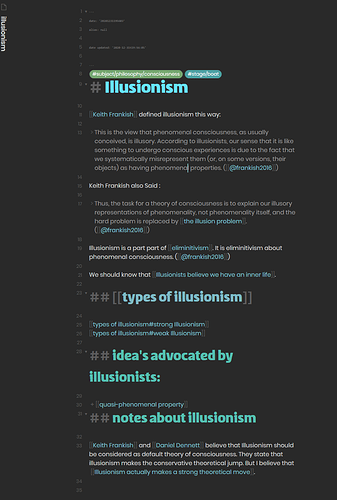I also have ADHD. And added to that I’m also researching this topic. So I like to think about ADHD as well.
I have a few straightforward suggestions:
- Use an “opportunistic” system. By that I mean that if your system requires you to spend time dedicated to regular maintainance of your vault, that would not at all work. For example MOCs are awesome. But they should not be the way that you mainly organize your vaults. Because they require you to spend time on maintaining those. It can be nice to have on the side.
- Use PARA. You can find a lot about PARA if you search for it. Or if you want, I can tell you more in direct. Now, why I’m saying that you need para is that para is pretty straightforward and cognitively minimal. you will have one system all over all of your systems. You will have a projects folder, areas of interest folder, resources and archives. They are pretty action oriented and just by a look at what the folder contains it reminds you what you have to do. And it is pretty rewarding when you move a folder from projects to archives. Added to that, it is pretty opportunistic. You will have to only change it, when you are done with each project.
- If you use para structure, make a folder in areas, named courses. For each course you take, make a folder. In that folder you put all of the resources for that course. If you take notes, make a note per each session and keep it in that folder. If you have homework, for each homework you should make a folder in the projects folder and add the due date to the name of that folder.
If you take general notes that you want to keep indefinitely, make a folder in the resources folder, called knowledge base. Put all the notes you need there. Also make another folder called asset base, and put every item (pdfs, slide shows, graphical assets, etc) under that.
I’m outdoors right now, I will attach a picture here of the structure, here, when I get back.
You also should use nested-tags.
For me, I have different categories.
#type/references -> I make a lot of notes that contain the referencing data of papers and books I read. I also name these notes starting with @citekey. If you are not doing a lot of academic works you probably won’t need it.
#type/fleeting -> these are the notes that I would not keep. Things like lists of homeworks or anything that would be useless in future.
#type/actionable -> these are notes or blocks of notes that tell me that tell me to do a specific thing. Like “search for this item”
For notes that I would keep in my knowledge base, I do not use any #type/ tags. They are the defaults
#stage/boat and #stage/evergreen -> these are about how complete a note is. For a better explanation take a look into @nickmilo’s LYT vault.
#subject/philosophy
#subject/cognitive-science
#subject/cognitive-science/time-perception
You get the idea.
Also use templates to have uniform and tidy set of notes without spending time on each note.
The key is automation. You should make it easy for yourself to be organized, not force yourself to do organizing.
Ok here is my folder structure:
Here is my tags structure:
Here is an example of my notes:
(you may notice that I didn’t put tags directly in the frontmatter, that’s because I like to have the visual effect as well as the autocomplete which makes it easier for me to add or edit tags, without too much effort: automation!)


